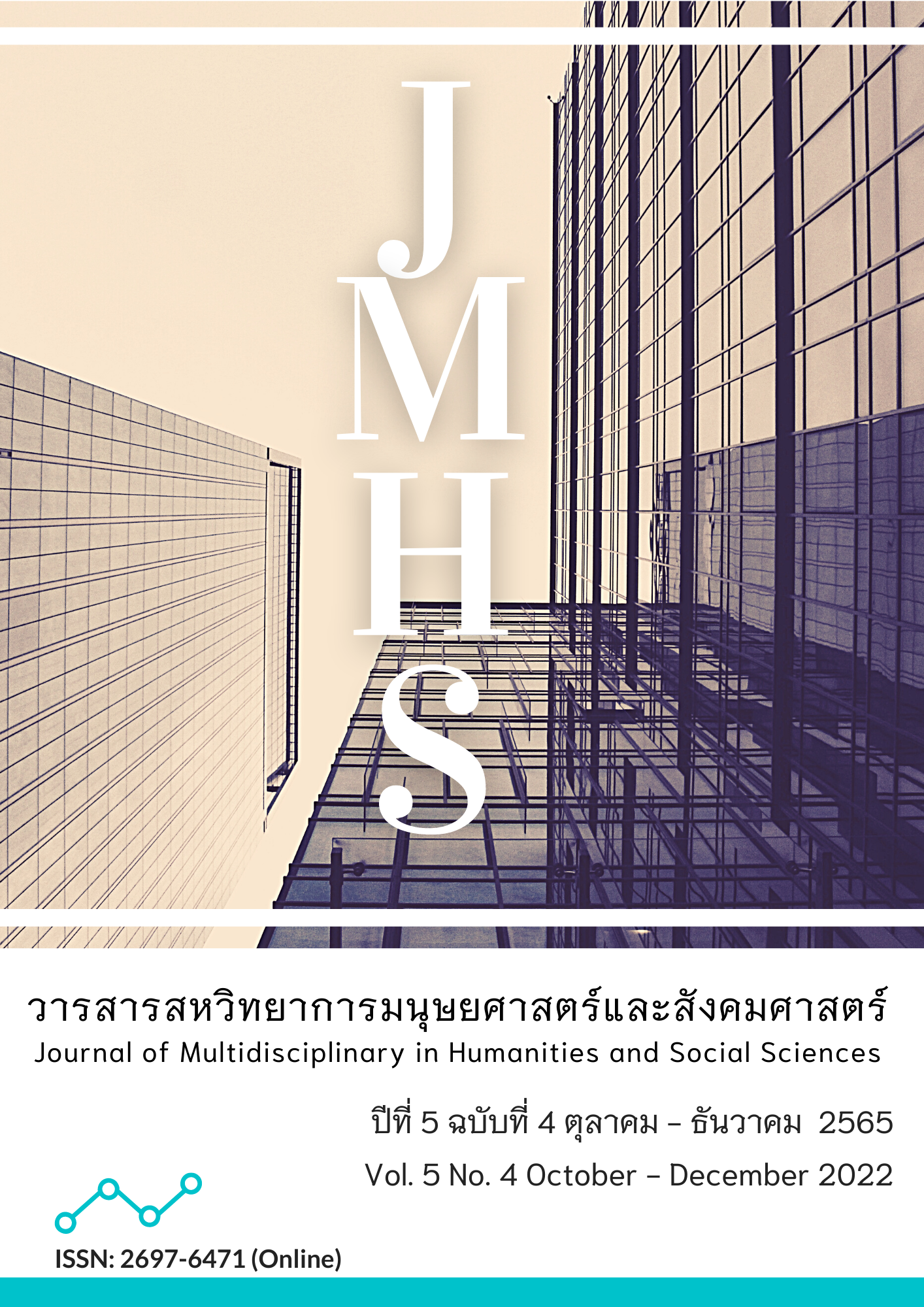The Development of Strategic Management in Non-Traditional Threats: A Study from Secondary Schools in Eastern Economic Corridor
Main Article Content
Abstract
This article aimed to 1) study non-traditional threats in secondary schools in the Eastern Economic Corridor; 2) develop strategic management for non-traditional threats in secondary schools in the Eastern Economic Corridor; 3) assess strategic management for non-traditional threats in secondary schools in the Eastern Economic Corridor; and 4) perform a preliminary test of strategic management for non-traditional threats in secondary schools in the Eastern Economic Corridor. Research methodology: relevant documents, concepts, theories, and research were studied, including an in-depth interview with educational administrators and experts in public health, drugs, and technology—eight people in total—about strategic management in non-traditional threats of secondary schools in the Eastern Economic Corridor. The TOWS Matrix was used as a tool for strategic planning, which was examined by a focus group consisting of 10 experts. The strategic management of non-traditional threats in secondary schools in the Eastern Economic Corridor was assessed by 19 experts. Statistics in the research were the frequency of suitability assessment results and the feasibility of the strategy. Differences in frequency were tested using Chi-square. The findings from the study revealed that: 1. The strategic management in non-traditional threats of secondary schools in the Eastern Economic Corridor consists of 5 major strategies, 10 minor strategies, and 72 methods. 2. The overall suitability assessment result was statistically significant at 0.01. 3. The overall feasibility of the strategic development was statistically significant at 0.01. The result of the pretest of the strategies was complete, which can be applied to increase efficiency in the strategic management of non-traditional threats of secondary schools in the Eastern Economic Corridor.
Article Details

This work is licensed under a Creative Commons Attribution-NonCommercial-NoDerivatives 4.0 International License.
Views and opinions appearing in the Journal it is the responsibility of the author of the article, and does not constitute the view and responsibility of the editorial team.
References
Anne, D. S. (2004). How Prepared are Our School for An Emergency?” A Survey of School Emergency Response Plants. Dissertation Abstracts International, 65(1), 66.
Anuwatprakit, S. (2014). School Management Strategies to Enhance the Competencies of Students in Schools under the Jurisdiction of Catholic Education Council of Thailand(Doctoral dissertation). Chulalongkorn University.
Boonthima, B. (2018). Concept of The Chi-Square Test. Bangkok: Rachan Educational Hermitage.
Bureau of Academic Affairs and Education Standards. (2009). Techniques and How to Hold Classroom Meeting: Summary Document for Student Care and Support System Team B.E. 2552 (2009). Bangkok: Kurusapa.
Chainikom, P. (2015). Knowledge and Preparedness of Non-Traditional Threats: A Case Study of Secondary School in Muaeng District, Phetchabun Province(Master’s Thesis). Phetchabun Rajabhat University.
Eastern Economic Corridor Office of Thailand. (2018). Eastern Economic Corridor Overall Plan B.E. 2560-2564. Retrieved from https://www.eeco.or.th/content/overviewplan.
Katesakorn, Y. (2009). Human Resource Planning and Policy: Personnel Planning and Policy. Bangkok: V.J. Printing.
Ministry of Education. (2012). National Education Act B.E. 2542 (1999) (No.2) and Amending the Act B.E. 2545 (2002) revise B.E. 2553. Bangkok: Siam Sport Syndicate Public Company Limited.
Ministry of Education. (2017). Eastern Economic Corridor Education Development Plan (B.E. 2560-2564). Retrieved from http://bps.sueksa.go.th/wp-content/uploads/2017/11/
Office of the Basic Education Commission. (2003). The Administration of Student Care and Support System for Developing Quality of Life of Students. Bangkok: Chuan Pim Printing.
Office of the Basic Education Commission. (2022). Performance Appraisal Form for the Basic Education Management of Office of the Basic Education Commission, Fiscal Year 2022, Pp.3.
Pomkasate, P. (2007). A Causal Model of the Effectiveness of Student Caring and Supporting Systems in Secondary Schools under the Office of Basic Education Commision(Master’s Thesis). Chulalongkorn University.
Plitponkarnpim, A. (2007). Enhance Safety in School. Bangkok: Ladphrao Printing.
Saengsurichai, S. (2013). Development of Student Counseling Via Online of Secondary Schools under the Office of the Basic Education Commission(Doctoral dissertation). Phetchaburi Rajabhat University.
Siribanpitak, P. (2009). Management and Administration for Small World. Bangkok: Prikwan Graphic.
Sritrakul, A. (2013). The Model Development of Student Care System Management in Schools under the Primary Educational Service Area Office(Doctoral dissertation). Naresuan University.
Ponviang, S. (2014). What is the Student Care and Support System?. Retrieved from http://bannongmaetaeng.com/data_86842
The Office of Strategy Management East Provincial Cluster. (2020). Plan of Development East Provincial Cluster (Chonburi Rayong Chantaburi Trad) 2018-2021. Retrieved from https://www.nesdc.go.th/ewt_dl_link.php?nid=10196&filename=index
Wheelen, T. L., & Hunger, D. J. (2012). Strategic Management and Business Policy. (13th ed.). New Jersey: Pearson.
Wiratchai, N. et al. (2005). The Student Care and Support System in the Secondary Schools under Mae Hong Son Educational Service Area Office 2(Independent Study). Naresuan University.


